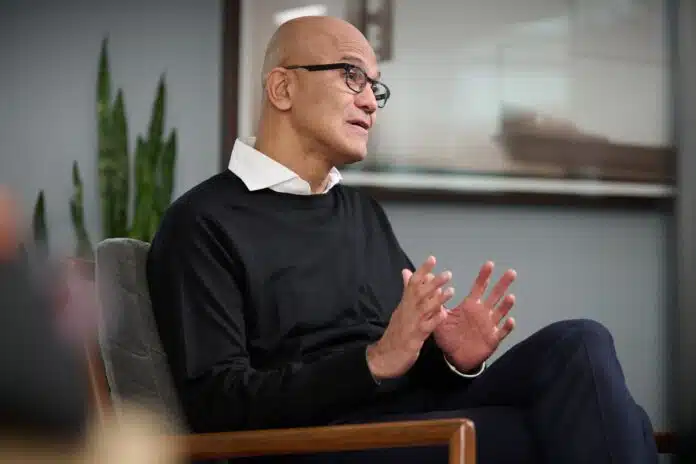Microsoft is using nuclear power as a means to support its aspirations in artificial intelligence. According to a recent job posting, Microsoft is searching for someone to spearhead the company’s exploration of next-generation nuclear reactors to power its data centers and artificial intelligence.
According to a job advertisement for a senior program manager who would head the company’s nuclear energy strategy, Microsoft believes that next-generation nuclear reactors can fuel its data centers and artificial intelligence objectives.
Data centers currently require a significant amount of electricity, which may make it difficult for the corporation to achieve its climate targets if it is unable to locate environmentally friendly sources of power. The corporation will have an even greater struggle to overcome this obstacle as a result of AI’s voracious appetite for energy. Artificial intelligence was front and center at Microsoft’s Surface unveiling a week ago.
There are no emissions of greenhouse gases from nuclear power. A new set of complications related to dealing with radioactive waste and establishing a reliable uranium supply might emerge if this happens. While the argument continues over whether or not nuclear power should play a part in efforts to slow global warming, Microsoft co-founder Bill Gates has long been an advocate for the technology.
Microsoft seems to be placing its bets on upgraded nuclear reactors, at least according to a recent job posting. As stated in the advertisement, the successful candidate would “lead project initiatives for all aspects of nuclear energy infrastructure for global growth.”
Microsoft is on the lookout for a specialist in the field of small modular reactor (SMR) deployment. These next-generation reactors are the focus of the nuclear industry’s current excitement. These modular reactors are expected to be simpler and cheaper to construct than their older, considerably bigger forebears. In contrast, after seven years of delays and an extra $17 billion in costs, the last big nuclear reactor to be constructed in the United States came online this summer.
In January, the US Nuclear Regulatory Commission officially approved a design for a small modular reactor (SMR), paving the way for utilities to choose the technology when seeking a new power plant license. And it may mark the beginning of a new era for nuclear power.
However, there are still issues to be resolved before Microsoft can fully depend on SMRs to provide energy to its cloud and AI data centers. When compared to today’s conventional reactors, SMRs need much more HALEU (highly enriched uranium fuel). Russia is now the world’s largest HALEU provider. Communities in the United States that are in close proximity to uranium mines and mills are already battling the effort to expand the domestic uranium supply chain. Additionally, there is the issue of nuclear waste, which even a fleet of SMRs may produce in large quantities and which the United States has not yet figured out how to permanently store.
Microsoft did not respond to The Verge’s concerns regarding its intentions for next-generation nuclear or how it may address the potential difficulties that might arise from pursuing such a scheme. Gates also established TerraPower, an incubator working on SMR ideas, and serves as its chair. For the time being, the firm “does not currently have any agreements to sell reactors to Microsoft,” as it explained to CNBC.
According to Axios, Microsoft has an agreement in place to purchase renewable energy credits from Ontario Power Generation, the Canadian utility that is expected to install the first SMR in North America. A website that specializes in covering the data center industry, DCD, first reported on the job posting last week.
In addition, Microsoft has entered into a bold agreement to buy power from a firm named Helion, which is building an even more advanced fusion power plant. Nuclear fission, the process by which atoms are torn apart to produce energy, is used in both traditional nuclear reactors and SMR designs. To generate one’s own energy, nuclear fusion entails smashing atoms together as stars do.
The ultimate goal is to construct a fusion reactor, which would produce infinite amounts of clean energy without the radioactive waste that results from nuclear fission. However, most scientists agree that a fusion power plant is at least a few decades away, despite decades of study and recent discoveries, and the world cannot wait that long to confront climate change.
OpenAI CEO and ChatGPT creator Sam Altman is also a supporter of Helion. Microsoft has said this year that it will continue its “multiyear, multibillion-dollar investment” in OpenAI. It was reported last week that Bing Chat will soon be able to use OpenAI’s DALL-E 3 picture generator. Microsoft chair and CEO Satya Nadella states in a job offer for a senior program manager in nuclear technology, “We are committed to helping our customers use our platforms and tools to do more with less today and innovate for the future in the new era of AI.”


